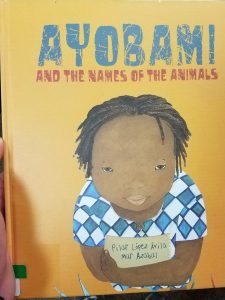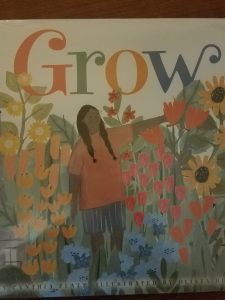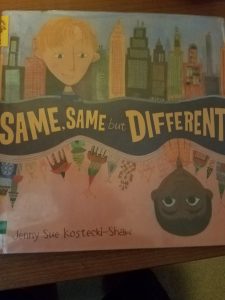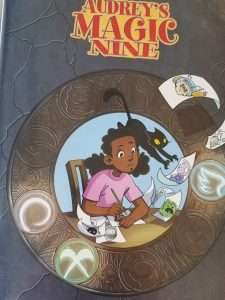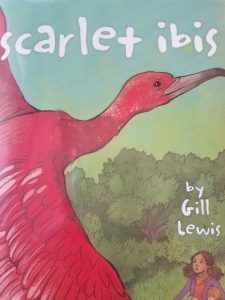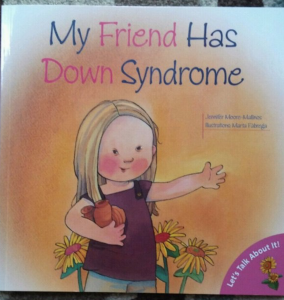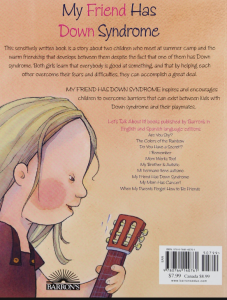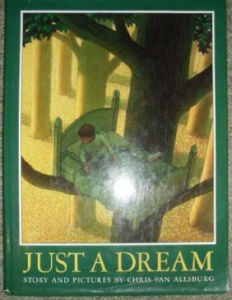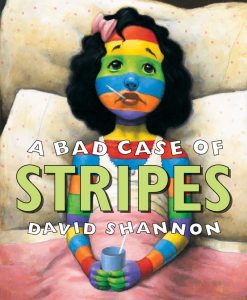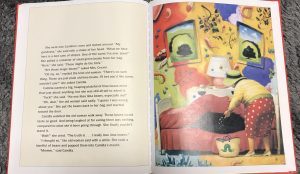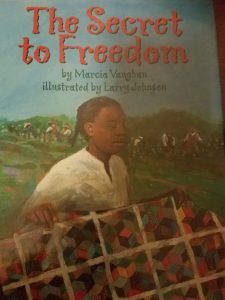
Title: The Secret to Freedom
Author: Marcia Vaughan
Illustrator: Larry Johnson
Publisher and Year: Lee & Low Books Inc. 2001
Number of pages: 32
Tags/Themes: Diversity, Emotion, Family, Fiction, Historical Fiction, Picture Book, 4-5, Evan White
Genre: Historical fiction; children’s; cultural; picture book
Descriptive Annotation: The Secret to Freedom is about Aunt Lucy sharing her story about her experiences in slavery to her grandniece. Lucy’s parents were sold off and was left with her brother Albert. Albert was part of the underground railroad movement and taught Lucy about quilts and how different designs tell the run-away slaves different information. Albert and Lucy became agents to aid slaves to freedom. Albert was caught one night and was lashed in the back. After that night they decided Albert needed to leave. Once the two children were older and had their own families, Albert found Lucy again and reconnected. Now Lucy’s grandniece knew their family history. The students will need to know about Civil War era, about slavery, and why going up north meant freedom. The back of the book has a brief history lesson and glossary for words the student may not understand. The illustrations are unrefined paintings but are still very detailed and show sadness on the characters’ faces throughout the story.
Classroom Application: This text would reinforce history and specifically the Civil War era. This text also meets Social and Emotional Learning Standards of handle challenging situations constructive and demonstrate caring and concern for others. Lucy shows a lot of control in her emotions. She identifies how depressed she is but is able to use her emotions to benefit runaway slaves. This story can be used to stretch the students into using their emotions to make an impact for others even when their emotions are filled with fury or sadness.
Linguistic and Cultural Diversity Analysis: This book represents pride in sharing perseverance from slavery. Aunt Lucy is proud of herself and Albert for assisting runaway slaves to freedom. ““Now I do declare, child, your eyes sparkle just like Albert’s did all those years ago” she said. Then we sat in happy silence, shelling peas into the bowl while the curtains billowed in the breeze beside us” (31). This book shows the value of story telling and sharing family history and how history is imperative to understanding part of American and black culture. The setting is also very explicit in showing Albert getting lashed and showing vivid images of it. For instance, the text reads, “Those men tied Albert to a tree and lashed him, lashed him hard till blood ran red down his back” (15). The content of this story is very serious and illustrates how slaves were treated. I would introduce the book by showing the students some images of common quilt patterns and what they meant. This can help the students understand the importance of the secret code used in the book and in history.

